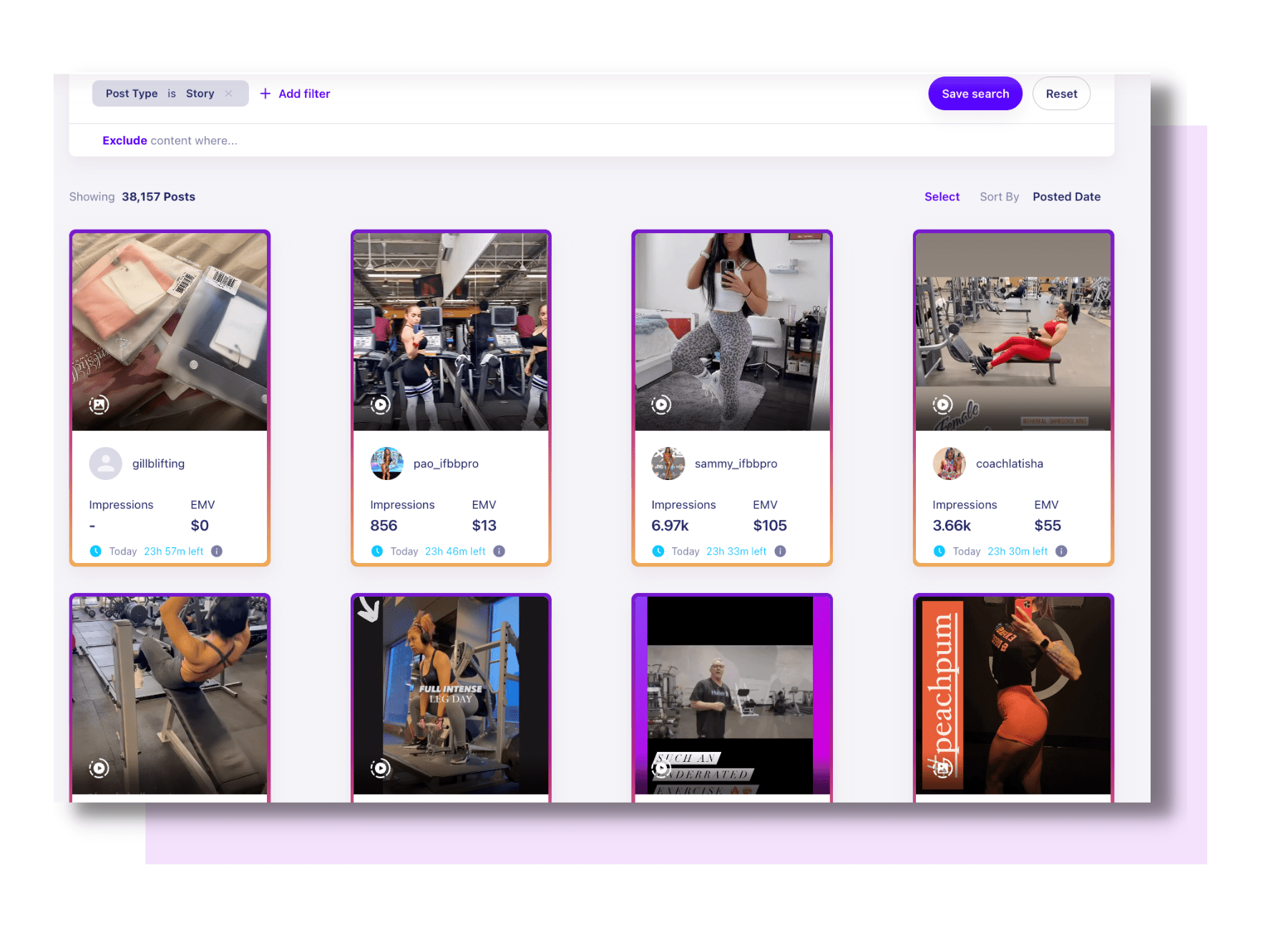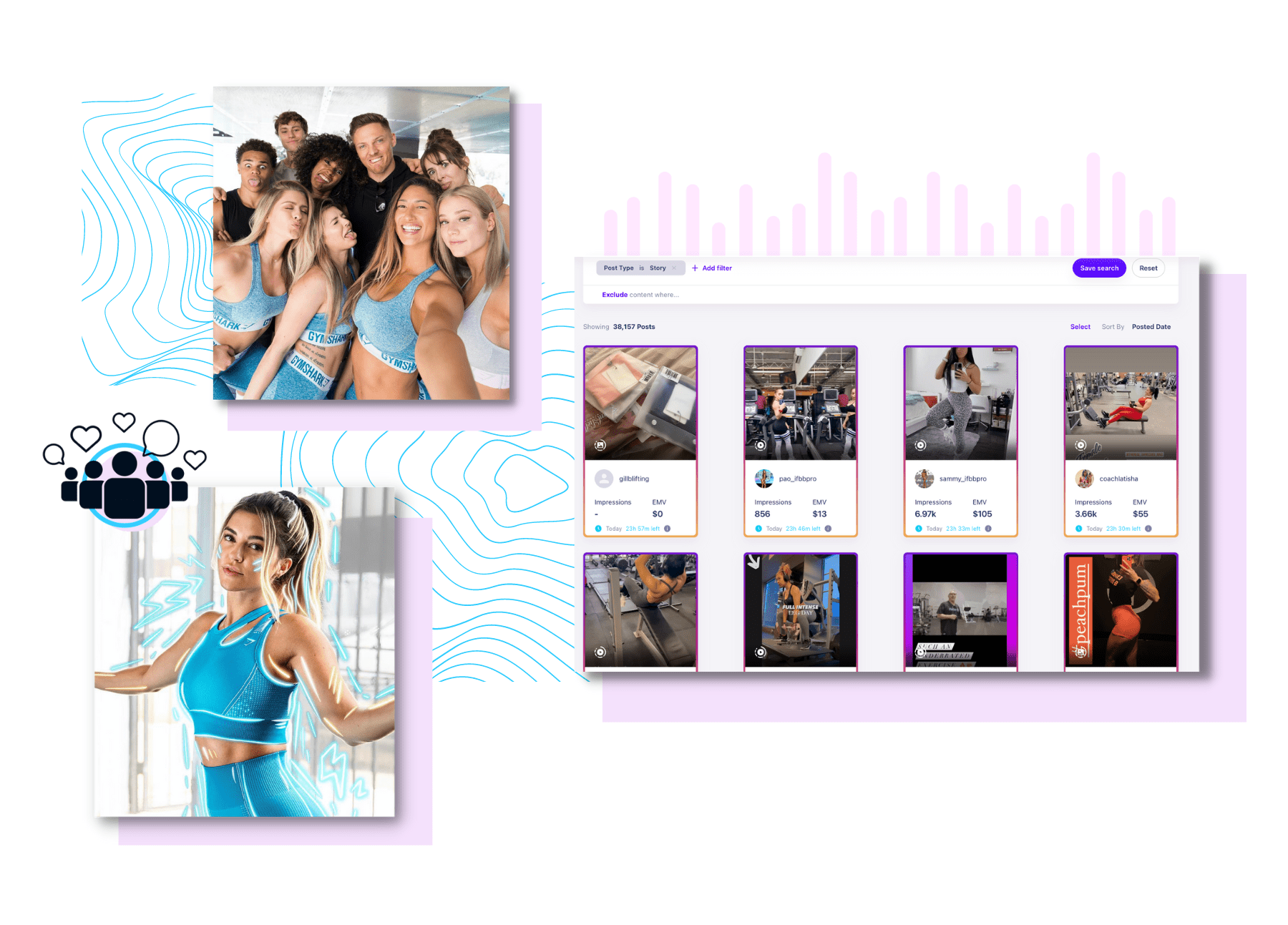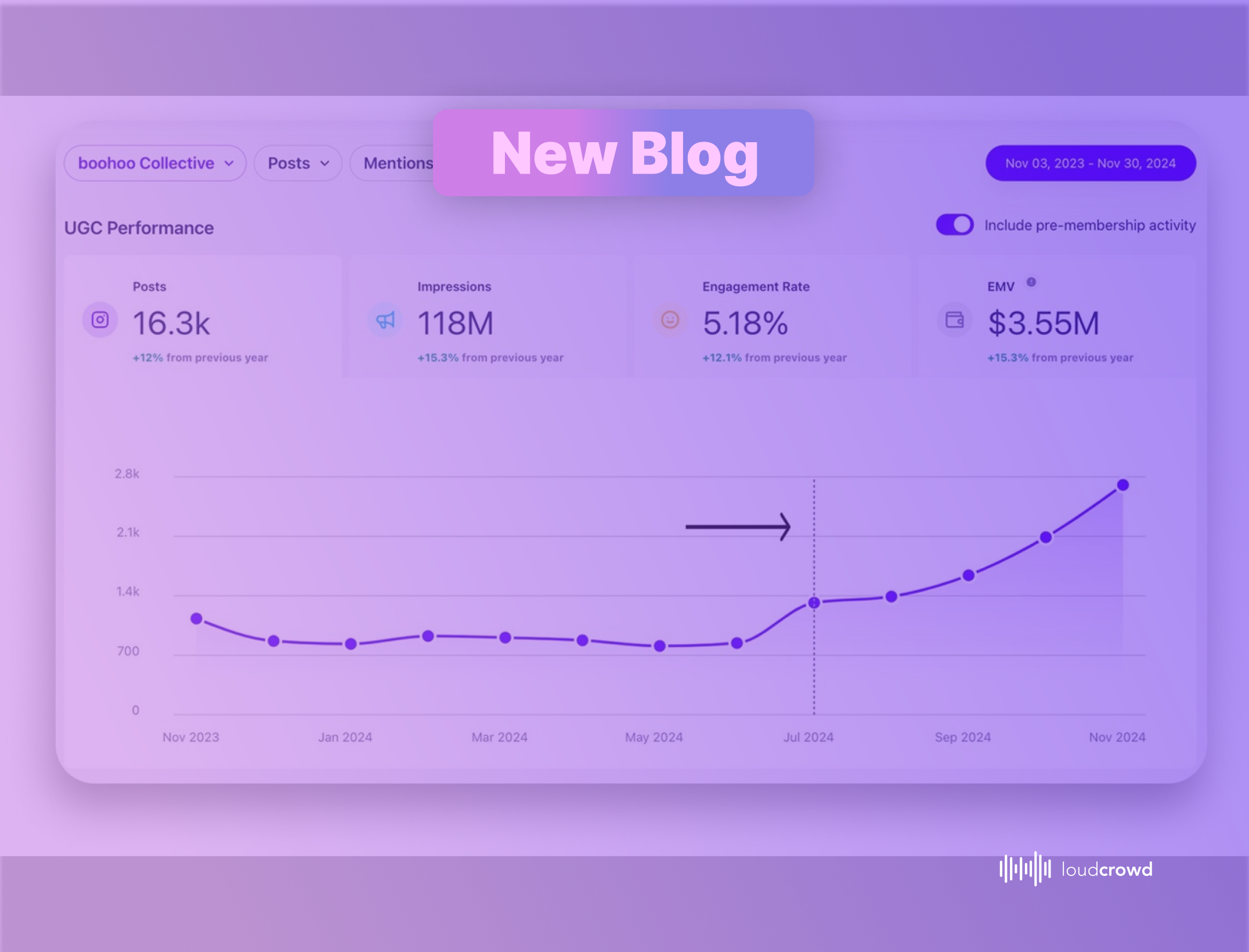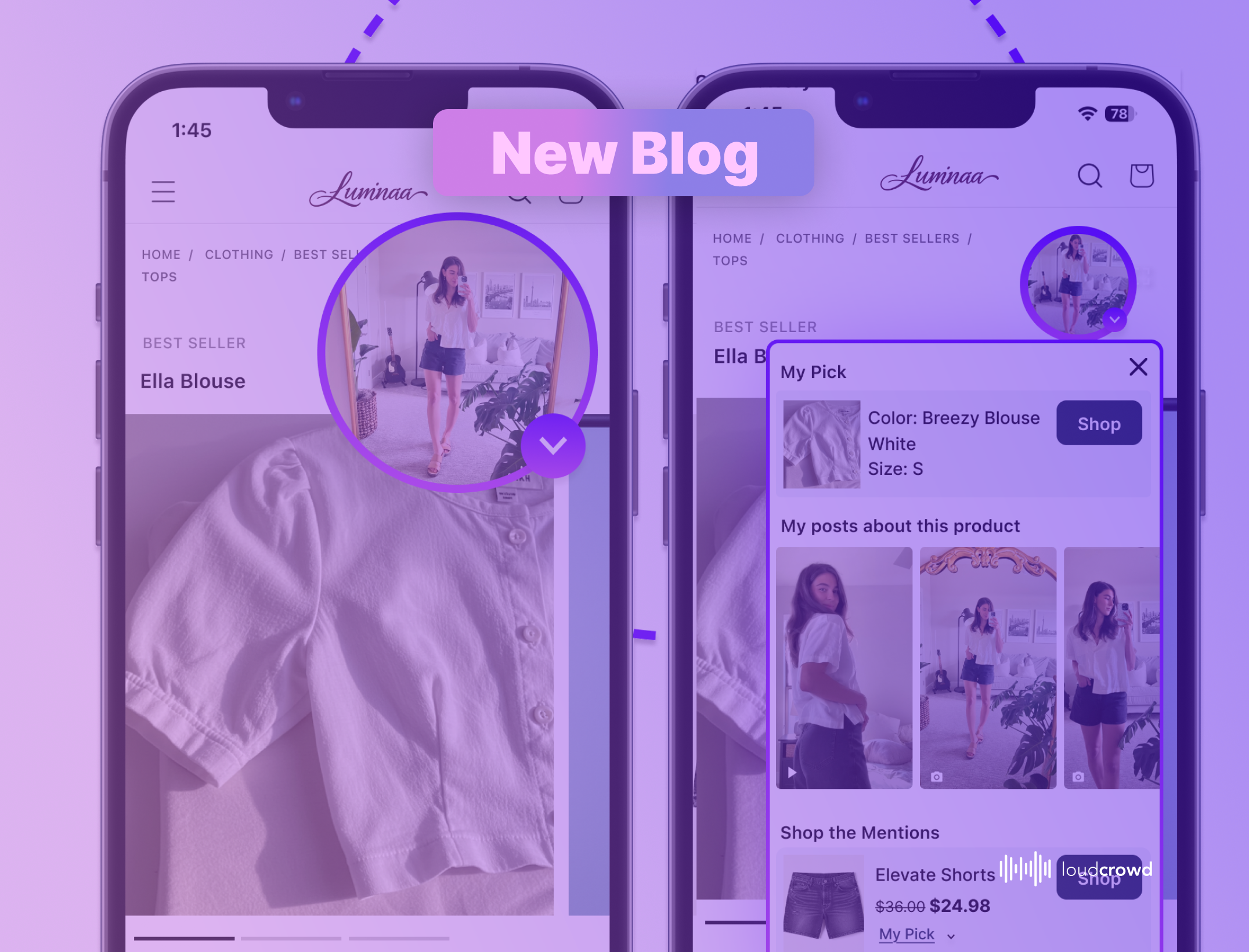Instagram stories are the most popular Instagram activity for users to quickly click through the daily chronicles of other people’s lives, and brands typically will get tagged in three times as many stories as feed posts. With over 500M Instagram accounts posting stories every day (increasing 60% annually), it’s the most important way for brands to find customer content.
But because the Instagram story length only lasts for 24 hours and a third of this customer content share is posted after office hours, they are also the hardest type of content to manage. Here’s a guide on how to effectively see and manage your Instagram Stories.
People tag brands in millions of stories each day, and every time it happens, it’s gold for the brand:
- The person who tagged you is giving you a free promotion, so you want to encourage that type of behavior as much as possible. 92% of consumers trust earned media more than other types of advertising (like ads and influencers).
- It helps the brand create a sense of community between customers and the brand, and creates very organic engagement posts to foster this community.
- If it’s a very high-quality person or piece of content, you can re-purpose it on your story to add social credibility (and not to mention free content).
But because stories disappear in 24 hours, they are also the hardest type of content to manage. Here’s a guide on how to effectively see and manage your Instagram Stories.
How to View Instagram Story Analytics
Unlike feed posts, tagged Instagram Stories do not have a convenient location on your profile page. When someone tags you in a story, you’ll get a notification in your Activity Feed. Instagram will also tell you how many Stories you are currently tagged in (over the last 24 hours).
You’ll have 24 hours to review each story before they expire and disappear from your Stories List. Never miss a story mention by leveling up your Social CRM strategy with LoudCrowd.
Instagram’s native features allow you to see what stories you are currently tagged in, but unfortunately, they don’t help you keep a record of who has tagged you in stories or how many people saw them.
LoudCrowd helps you track every single story you’ve been tagged in and stores a record of who’s created stories for you in the past. Want to see who tagged you in the most stories last month? Or how stories impressions a nano influencer created for you last week? LoudCrowd automatically measures all of this content.

FAQ – Can I Download Instagram Stories?
Instagram is committed to the ephemeral nature of Stories, so stories will disappear after 24 hours. Though there’s no feature to download other customers’ Instagram stories (yet), once they mention you it opens up the ability to DM them without sending it to the request inbox. With the now open line of communication, you can ask them to send the original UGC for your content arsenal.
To help “keep a record” of stories that occur, may add a tagged story to their own story, and then save their own story to Highlights or their Camera Roll.
For brands looking for more automated record-keeping and analytics, LoudCrowd’s Measure product allows them to automatically keep a record of who tagged them in stories.

Instagram Tools for Customer Rewards and Engagement
As we noted above, tagged stories are extremely valuable for the brand. Customers can add links to shop your product featured on their story, include a location tag to your store location, campaign or brand challenge-related hashtags, and polls for their followers (potential new customers) to engage on their branded story Posts. The goal should be to get as many tagged stories as possible and create a sense of community around these engagement points.
To build a strategy for managing tagged stories, first let’s review what brands typically do when someone tags them in a story.
- Respond. To show appreciation for their posts, most brands try to respond to as much of their UGC as possible, including stories. With stories it is particularly quick, since there is a message box that appears at the bottom of the stories. [example]
- Feature. Instagram built in the ability to “Add this to your Story”. That’s the fastest way to feature any type of content, and it has a profound impact on your customers behaviors. Customers that are featured typically create 80-100% more content in the future. You also show your other customers that you are building a strong community and reward tags.
- Gift. If someone creates valuable content, many brands go beyond featuring and send them an actual reward. Rewards don’t have to be expensive and time-consuming, they could be one-click digital coupons for things like Free Shipping, 20% off, or product. Simply DM a digital code (or use LoudCrowd to send it in one-click)
- Partner. When potential nano influencers or ambassadors tag you, invite them to a brand ambassador program or propose a partnership. The key to “not missing” any potential partners is to click on everyone’s profile (as opposed to just viewing their story). Software like LoudCrowd can also make it simple and easy to track everyone that tags you.
Learn More: The Power of Instagram as a Social CRM tool
With these engagement tools at your disposal, you can build a strategy that determines how to engage with your community. An example strategy from one of our apparel clients is:

Building this type of strategy allows you to focus on engaging with your community in a holistic, appropriate fashion, and helps your brand get more stories every month.
And that’s the goal, get more of your customers to create stories, and keep driving word-of-mouth marketing and amazing content.
About LoudCrowd
We believe that the most effective way of marketing and selling your product is through word-of-mouth marketing. Currently, the best (and most engaging way) for brands to scale word-of-mouth marketing is through User Generated Content (UGC) on social platforms like Instagram. LoudCrowd helps you analyze your UGC and incentivize your customers to grow it: request a demo!
About the Author
Gary Garofalo is a marketing-focused technologist and the CEO of LoudCrowd. He’s spent his career focused on analytics, strategic consulting, and building technology companies. When he’s not writing about social media, he spends his free time reading, lamenting over the risks of climate change and artificial intelligence, and playing pickleball with the LoudCrowd team.



